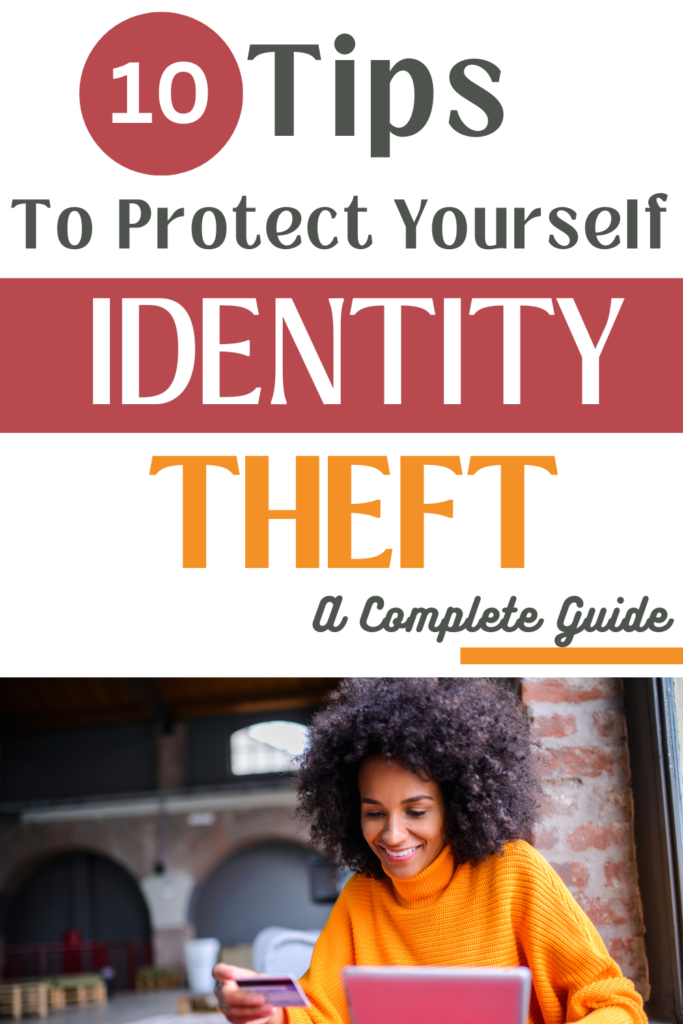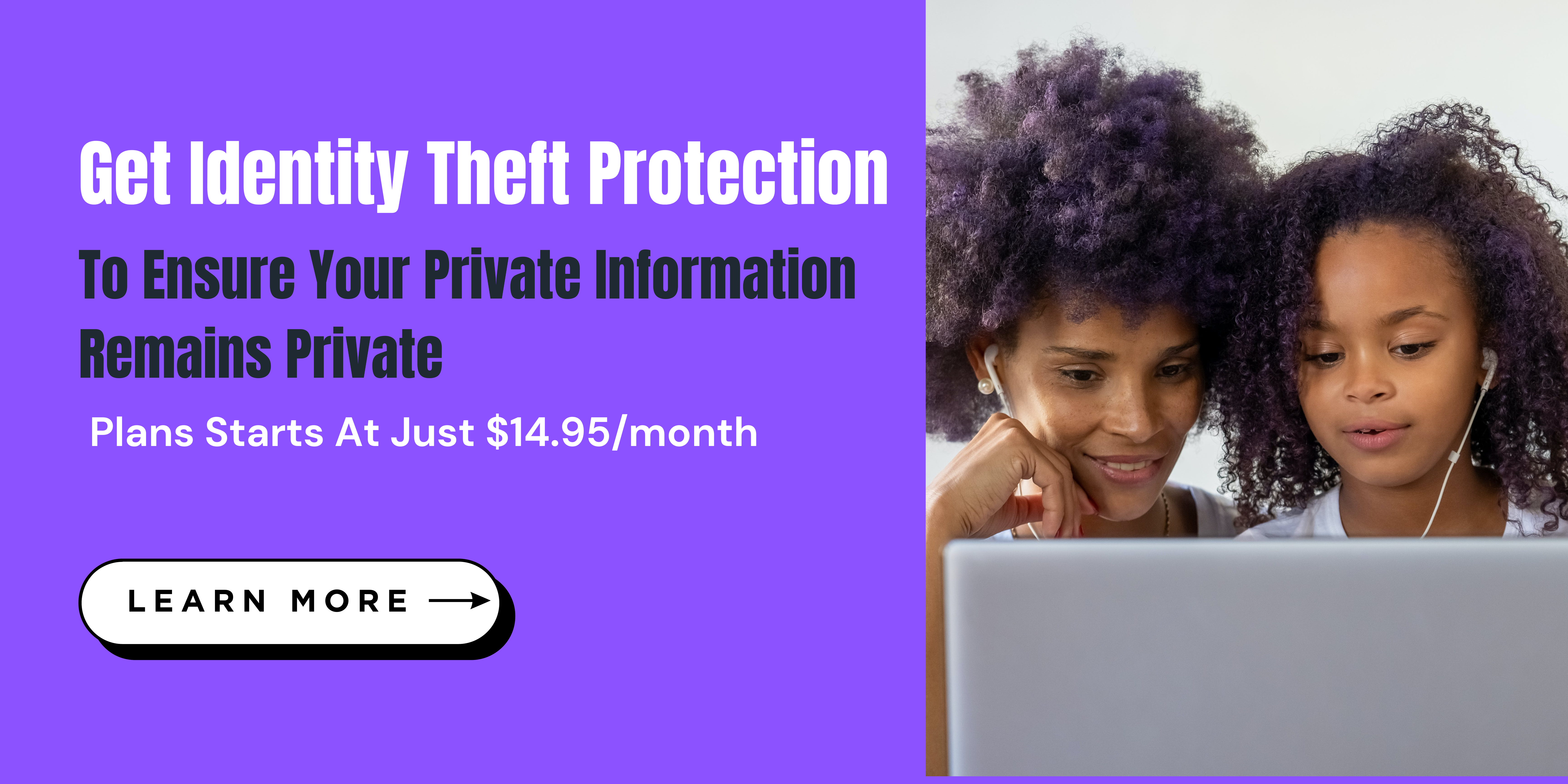 In an era dominated by digital transactions and online interactions, the risk of identity theft has become a pervasive concern for individuals. Identity theft occurs when someone wrongfully obtains and uses another person’s personal information for fraudulent purposes, often resulting in financial loss and emotional distress. To safeguard yourself from this ever-present threat, it’s crucial to adopt proactive measures. In this blog post, we’ll explore the top 10 tips to effectively protect yourself from identity theft.
In an era dominated by digital transactions and online interactions, the risk of identity theft has become a pervasive concern for individuals. Identity theft occurs when someone wrongfully obtains and uses another person’s personal information for fraudulent purposes, often resulting in financial loss and emotional distress. To safeguard yourself from this ever-present threat, it’s crucial to adopt proactive measures. In this blog post, we’ll explore the top 10 tips to effectively protect yourself from identity theft.
1. Monitor Your Financial Statements Regularly
One of the most effective ways to detect unauthorized transactions is by consistently monitoring your financial statements. Set aside time each month to review your bank statements, credit card bills, and other financial accounts. Look for any unfamiliar charges or suspicious activities, and report them immediately to your financial institution. Timely detection can prevent further damage and enable quick action to resolve the issue.
2. Use Strong and Unique Passwords
The foundation of your digital security lies in the strength of your passwords. Create unique and complex passwords for each of your online accounts, combining uppercase and lowercase letters, numbers, and special characters. Additionally, you should avoid using easily guessable information, such as birthdays or names. Consider using a reputable password manager to generate and store your passwords securely. Finally, you should update your passwords regularly to add an extra layer of protection.
3. Enable Two-Factor Authentication (2FA)
Two-factor authentication provides an additional layer of security by requiring a second form of verification in addition to your password. This often involves receiving a code on your mobile device or email that you must enter to access your account. Enable 2FA wherever possible, especially for sensitive accounts such as email, banking, and social media. Therefore, this extra step can significantly reduce the risk of unauthorized access even if your password is compromised.
4. Be Wary of Phishing Attempts
Phishing is a common tactic used by identity thieves to trick individuals into revealing sensitive information. Be cautious of unsolicited emails, messages, or phone calls asking for personal or financial details. Legitimate organizations will never request sensitive information through email. Verify the legitimacy of any communication by contacting the organization directly through official channels. Avoid clicking on suspicious links, and be wary of fake websites designed to mimic legitimate ones.
5. Secure Your Social Media Profiles
Social media platforms are treasure troves of personal information, making them attractive targets for identity thieves. First, review and adjust your privacy settings to control who can see your personal details. Secondly, be cautious about sharing sensitive information, such as your full birthdate or address, on social media. Thirdly, regularly audit your friend list and remove any unknown or suspicious accounts. Remember that the more information you share, the easier it becomes for identity thieves to piece together a profile of you.
6. Shred Sensitive Documents
Physical documents containing personal information can be a goldmine for identity thieves. Shred documents such as bank statements, credit card offers, and medical bills before disposing of them. Use a cross-cut shredder for added security. This simple practice helps ensure that your sensitive information doesn’t end up in the wrong hands through dumpster diving or other means of physical theft.
7. Protect Your Computer and Devices
Ensure that your computer and devices are equipped with up-to-date security software. Install reputable antivirus and anti-malware programs to detect and remove potential threats. Regularly update your operating system and applications to patch security vulnerabilities. Avoid connecting to unsecured Wi-Fi networks, especially when conducting sensitive transactions. Taking these precautions helps create a robust defense against online threats that could compromise your personal information.
8. Secure Your Mailbox (Top 10 Tips to Effectively Protect Yourself from Identity Theft)
Physical mail can contain valuable information that identity thieves may exploit. Collect your mail promptly, especially during periods when you’re away from home. Consider using a locked mailbox or a P.O. Box for added security. Opt for electronic statements and bills whenever possible to reduce the amount of sensitive information sent through the mail. If you move, update your address with financial institutions and other relevant organizations promptly to ensure your mail is redirected securely.
9. Educate Yourself About Common Scams
Staying informed about common scams and tactics used by identity thieves is essential for protecting yourself. Be skeptical of unsolicited emails or messages promising unexpected rewards or threatening consequences. Furthermore, educate yourself about common phishing techniques and be cautious when providing personal information, even if the request seems legitimate. Awareness is a powerful tool in preventing identity theft, and being informed empowers you to recognize and avoid potential threats.
10. Check Your Credit Reports Regularly
Monitoring your credit reports is a proactive way to identify any unauthorized or suspicious activity. Obtain free annual credit reports from each of the major credit bureaus – Equifax, Experian, and TransUnion. Additionally, review these reports carefully for inaccuracies or unfamiliar accounts. If you notice any discrepancies, report them immediately to the respective credit bureau. Consider using a credit monitoring service for real-time alerts about changes to your credit profile.
Related Post: Exploring Various Types of Identity Theft

Conclusion
In an interconnected world where personal information is constantly exchanged, protecting yourself from identity theft requires a proactive and vigilant approach. By implementing these top 10 tips – from monitoring your financial statements to securing your digital and physical assets – you can significantly reduce the risk of falling victim to identity theft. Remember, the key is to stay informed, stay vigilant, and take decisive action at the first sign of suspicious activity. Therefore, safeguarding your identity is an ongoing process, and these measures will empower you to navigate the digital landscape with confidence and security.
Bonus Tip: If you or someone you know is interested in additional identity theft protection, we can help. Click this link to learn more and get started today.
What other tips would you add to the list? Let us know in the comments below.
Cheers!







